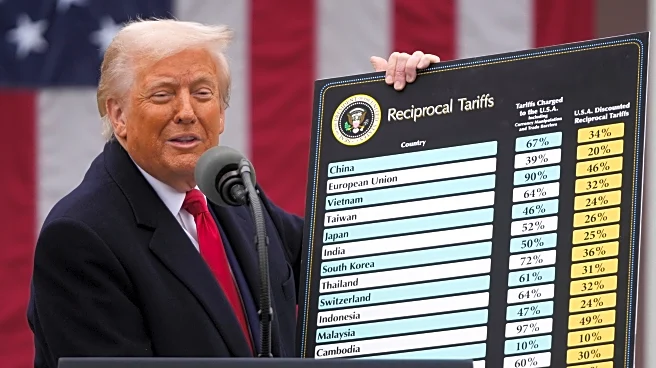What's Happening?
Soybean and wheat futures have risen following the announcement of a new U.S.-China trade agreement. The White House disclosed that China will remove all retaliatory non-tariff measures against the U.S. and commit
to purchasing significant quantities of U.S. soybeans over the next few years. Specifically, China will buy at least 12 million metric tons of U.S. soybeans in the last two months of 2025 and at least 25 million tons annually for the next three years. Additionally, China will suspend export controls on rare-earth materials and issue export licenses beneficial to the U.S. In response, the U.S. will reduce tariffs related to fentanyl from 20% to 10% and extend certain tariff inclusions. This agreement marks a significant development in U.S.-China trade relations, with potential impacts on various sectors.
Why It's Important?
The trade agreement between the U.S. and China is significant for several reasons. It promises to boost the U.S. agricultural sector, particularly soybean farmers, by opening up a substantial market in China. The commitment to purchase large quantities of soybeans could stabilize prices and provide a reliable revenue stream for American farmers. Additionally, the suspension of export controls on rare-earth materials by China could benefit U.S. industries reliant on these materials, such as technology and defense. The reduction in tariffs related to fentanyl also indicates a collaborative effort to address the opioid crisis. Overall, this agreement could enhance economic ties between the two nations and provide a framework for resolving other trade disputes.
What's Next?
The implementation of this trade agreement will likely be closely monitored by both governments and industries. U.S. agricultural producers will prepare to meet the increased demand from China, while policymakers will assess the impact of reduced tariffs and export controls. The agreement may also influence future negotiations on other trade issues between the U.S. and China. Stakeholders in the technology and defense sectors will watch for changes in the availability and pricing of rare-earth materials. Additionally, the agreement's impact on the opioid crisis will be evaluated as both countries work to curb the flow of fentanyl.













